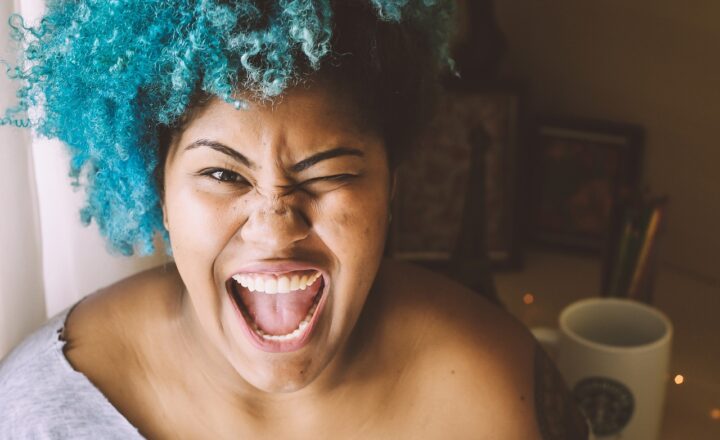Exploring the Role of Art Therapy in Mental Health
November 14, 2024

Art therapy is a form of psychotherapy that utilizes artistic expression as a means of communication and exploration of emotional experiences. This therapeutic approach has gained recognition for its ability to promote mental well-being and address various psychological issues. By allowing individuals to express themselves creatively, art therapy fosters personal growth and healing, making it a powerful tool in the mental health field.
1. What is Art Therapy?
Art therapy combines psychological theory and artistic practice to help individuals process their thoughts and emotions. Instead of relying solely on verbal communication, art therapy engages clients through various forms of artistic expression, such as painting, drawing, sculpting, and collage-making. This creative process can provide non-verbal insights into a person’s experiences, facilitating deeper understanding and healing.
Key Elements of Art Therapy:
- Non-Judgmental Environment: Art therapy aims to create a safe space where individuals feel comfortable expressing themselves without fear of criticism.
- Focus on Process over Product: The emphasis in art therapy is on the creative process rather than the finished artwork. This allows clients to release emotions and explore new ideas freely.
- Emotional Exploration: Art therapy provides a unique avenue for individuals to explore complex feelings, enabling them to recognize and process emotions that may be difficult to articulate verbally.
Through art therapy, individuals can work through trauma, anxiety, depression, and other mental health challenges in a supportive environment.
2. The Benefits of Art Therapy
Art therapy has been shown to offer numerous benefits for mental health. Some of the key advantages include:
- Enhanced Self-Esteem: Engaging in artistic expression can boost self-confidence and foster a sense of accomplishment, improving an individual’s overall self-esteem.
- Stress Relief: The creative process allows individuals to channel their feelings and reduce stress levels, promoting relaxation and emotional balance.
- Improved Communication Skills: Art therapy can enhance non-verbal communication, enabling individuals to express thoughts and feelings more effectively, particularly those who struggle with traditional talk therapy.
- Emotional Regulation: Creating art provides a means for individuals to process emotions, helping them gain insight into feelings and cultivate healthier emotional responses.
- Conflict Resolution: The therapeutic process allows individuals to work through personal conflicts and fosters better relationships with others.
The benefits of art therapy can profoundly impact an individual’s mental health, promoting healing and personal growth.
3. Art Therapy Approaches
Various methods are employed in art therapy, tailored to meet the specific needs of individuals. Some notable approaches include:
- Guided Imagery: This approach involves visualizing scenes or experiences while engaging in the creative process, helping individuals explore underlying emotions and memories.
- Expressive Arts Therapy: This integrative method combines multiple art forms—such as movement, music, and drama—allowing individuals to express themselves through various mediums and foster greater self-discovery.
- Narrative Art Therapy: Utilizing storytelling alongside artistic expression, this approach encourages individuals to narrate their experiences, thus promoting self-reflection and insight.
- Sand Tray Therapy: This method uses miniature figures and a sandbox to create scenes that symbolize personal experiences, aiding in the exploration of emotions and conflicts through play.
Each of these approaches can be tailored to the individual’s unique needs, providing a personalized experience that fosters healing and growth.
4. Art Therapy for Specific Populations
Art therapy is versatile and can be effectively utilized across diverse populations. Here are some specific groups that benefit from art therapy:
- Children: Children often struggle to express their emotions verbally. Art therapy provides an outlet for them to share their feelings, helping them cope with trauma, behavioral issues, or family changes.
- Trauma Survivors: Individuals healing from trauma can find solace in art therapy, as it allows for the expression and processing of complex feelings in a safe environment.
- Individuals with Mental Health Disorders: Art therapy can benefit those with conditions such as depression, anxiety, PTSD, and schizophrenia by promoting emotional awareness and coping strategies.
- Individuals Facing Chronic Illnesses: Patients with chronic illnesses can use art therapy to manage pain, cope with feelings of isolation, and enhance their overall quality of life through creative expression.
Art therapy continues to prove its adaptability and effectiveness for a wide range of populations, emphasizing the importance of creativity in the healing process.
5. Research Supporting Art Therapy
Numerous studies have documented the effectiveness of art therapy in treating various mental health issues. Research has shown:
- Reduction in Symptoms: Many clients report a significant decrease in symptoms of anxiety and depression following art therapy sessions, contributing to overall emotional well-being.
- Improved Emotional Awareness: Clients often demonstrate increased emotional awareness and ability to engage in more productive social interactions after participating in art therapy.
- Enhanced Quality of Life: Art therapy has been linked to improved quality of life, with clients expressing greater satisfaction and fulfillment in their daily lives.
Research findings underscore the potential of art therapy to deliver profound mental health benefits, validating its use as an essential therapeutic tool in mental health interventions.
6. Getting Started with Art Therapy
If you’re interested in exploring art therapy, here are some steps to help you get started:
- Research and find a qualified art therapist. Look for someone who is licensed and has experience working with clients who share similar needs.
- Consider joining group art therapy sessions, which can provide additional support and foster a sense of community among participants.
- Be open to the creative process, and remember that there is no right or wrong way to create art.
- Allow yourself to explore your emotions freely and embrace the therapeutic experience fully.
Engaging in art therapy can be a transformative journey, offering the opportunity for healing and self-discovery through creative expression.
Conclusion
Art therapy serves as a powerful and effective therapeutic approach to mental health. By encouraging creativity and self-expression, individuals can access and navigate their feelings, opening doors to healing, growth, and enhanced emotional well-being. Whether through individual or group sessions, art therapy can provide a compassionate space where clients can communicate their inner experiences and embark on a journey toward mental health recovery.
If you’re seeking ways to support your mental health or that of a loved one, consider exploring the enriching world of art therapy, where creativity meets healing.






